
LG Display showed off the scintillating possibilities of OLED technology last year with a rollable 22-inch OLED display. Now, the company has
unveiled a detachable 55-inch display that you can literally stick to a wall using nothing more than a magnet.
OLED displays differ from LED-lit LCD displays as they don't need a backlight to brighten up your living room, which not only allows the displays to offer unparalleled black levels, rich colors, and vivid contrast, but also allows OLED displays to be remarkably thin. The design gets even thinner when you remove the brains of the TV from the equation.
LG unveiled its first commercially viable OLED TV last year in the EC9300 HDTV ($3,500), and has continued to ramp up production, unveiling several new models for 2015, all of which will pack 4K UHD resolution. The company did say that it expects to sell 600,000 OLED panels this year, and 1.5 million next year. Just when (or if) the rest of us will get our hands on one of those futuristic, ultra-thin OLED displays that can be peeled off the wall with ease remains to be seen.
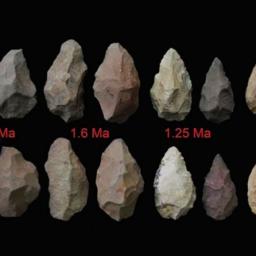
The oldest known stone tools in the world were made some 3.3 million years ago, which would make these newly discovered
implements older than modern humans. Archaeologists working in the Kenyan Rift Valley that discovered the tools said the set of 20 stone flakes and anvils are some 700,000 years older than stone tools from Ethiopia that previously held this record. These tools predate the earliest fossils representing our genus, Homo, by 500,000 years. What these tools suggest is that stone tool manufacture didn't begin with Homo as previously held but with a more primitive member of the human family.
Scientists working at the site of Dikika, Ethiopia in 2010 where fossils belonging to Lucy's species had previously turned up said they had recovered 3.4 million year-old animal bones bearing distinctive marks. They argued hominins had made the marks in the course of slicing meat off the bones with stone tools. The claim caused heated debate with some scientists saying the alleged cut marks were instead the result of the bones having been trampled by passing animals. Others suggested they were bite marks from crocodiles.
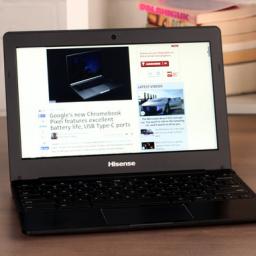
Google and its partners are preparing
a flood of new hardware to sway consumers away from cheap Windows laptops. Chromebooks from HiSense and Haier go on sale today for just $150 each. You also might consider the Asus Chromebit that will cost less than $100. The Chromebit looks very similar to the Chromecast, but runs a full Chrome-OS instance, on-a-stick, ready to plug into any monitor. "Think of a school lab, all the peripherals, but stuck to a desktop. Now you can replace that."
The secret behind these low-cost devices is
the RK3288, a very inexpensive quad-core Cortex-A12 ARM architecture processor, which was launched in mid-2014 from Rockchip, a Chinese chip maker that's little known outside of industry circles. Because the chip can draw as little as 3 watts of power, the Chromebooks based on it are designed without fans, and can last all day on a single charge. You also get 2GB of storage, and a 16GB SSD in all 3 devices.
With fewer than 25 million Chromebook sales last year (opposed to more than 302 million PC sales), Google still has work to do. And thus today's announcement. Google and its partners are lowering prices further while chasing the one commodity laptop users value most: battery life.

For almost as long as aircraft carriers have existed, they've been equipped with steam-powered catapults to help fighters and bombers get airborne. That's a remarkably old-fashioned technology when you're launching stealth fighters that cost upwards of $20 million each. Aircraft carriers are gigantic, but the runways simply aren't long enough for most planes to generate sufficient lift under their own power.
The US Navy is now testing a replacement system called the
Electromagnetic Aircraft Launch System (EMALS) aboard the new USS Gerald R. Ford. It works by using an electric current to generate magnetic fields that propel a carriage down the track built into the runway, launching planes much more smoothly and efficiently than the old steam catapults with improved reliability. A steam catapult takes up a great deal of space and weigh in excess of 1,300 pounds. These systems take a long time to recharge after each launch, and the launch itself is rather abrupt. There's no smooth acceleration with a steam piston, resulting in increase wear on the body of the aircraft. Steam catapults also use more power than the EMALS system.
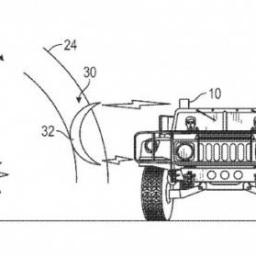
This month, Boeing was granted a patent for
generating force fields that keep shockwaves from harming military vehicles. The Boeing Company's patent, "Method and system for shockwave attenuation via electromagnetic arc," was filed in May 2012.
"The idea is to harness electrical energy to stop or slow down the shockwaves created by explosions, which can do just as much damage as shrapnel." Boeing's plan would be to "marry a rapid explosion sensor with an arc generator to protect targets like military vehicles." Laser sources send out high-intensity laser pulses in the direction of the explosion. The laser pulses ionize the air to form a laser-induced plasma channel." The channel differs from the ambient air in density, temperature and composition. The result would be a buffer zone- different temperature, air density and other characteristics would reflect, refract, absorb and deflect at least a portion of the shockwave.
HP has become the latest "legacy" IT vendor to announce it would ship commodity switches for web-scale data centers that support network management software other than its own. HP Switches
will run the Cumulus Linux OS. The company claims the approach can reduce data center operating costs by up to 68 percent. HP's competitors Dell and Juniper have already announced open commodity network switches of their own. Dell said it would ship data center switches with a Linux-based network operating systems by Cumulus Networks or by Big Switch Networks, as alternatives to its own network OS, last year. Notably, Cisco has not introduced commodity switches. The world's largest data center networking vendor has built an empire selling tightly coupled hardware-and-software bundles, and cheap open network hardware is a threat to its dominance. However, Cisco too has been slowly offering more software-defined networking/
OpenFlow features and compatibility in their hardware.
Internet giants, such as Google, Facebook, and Amazon, which operate massive data centers around the world, have found it more effective to design their own hardware and have so-called "Original Design Manufacturers," the likes of Taiwan's Quanta and Foxconn, manufacture it for them. The trend has created a problem for incumbent IT vendors, such as HP, Dell, IBM, and Cisco, which found themselves competing with contract manufacturers of their products for the same high-volume deals. Facebook, through its
Open Compute Project, offers design specs and has spread awareness about cost effectiveness of this IT procurement model. There is now growing interest in low-cost commodity hardware among enterprises who are not necessarily Internet giants, creating a new threat to the incumbents' market share.

The world's first hotel staffed almost entirely by robots and controlled by the latest in computer technology is slated to open, yes, in Japan. The hotel will initially be
staffed by 10 robots working alongside humans to provide a wide range of services from manning the reception desk to carrying bags and cleaning rooms. The management hopes to eventually "have more than 90 percent of hotel services operated by robots."
In addition to the robots, the 72-room facility will feature high-tech gadgetry. Instead of traditional air conditioning, for example, rooms will feature radiation panels that will automatically detect body heat and create a "comfortable indoor environment with no unevenness." Hotel guests will also be able to access their rooms using facial recognition technology instead of room keys. The Henn-na is planned to be built in two stages, with the
first stage opening July 17. A second stage will consist of an additional 72 rooms and is due to be completed the following year.

A new version of the Raspberry Pi single-board computer
has been unveiled in London today, boasting more memory and a new processor that is six times faster than its predecessor. The Raspberry Pi 2 is available to buy today from element14, priced at $35.
It is the same size as the previous version, but comes with a Broadcom BCM2836 ARMv7 quad core processor, and runs at 900MHz with 1GB of RAM. It offers complete backward compatibility with the existing Model B+. All cases and third-party add-on boards are also fully compatible with the new Raspberry Pi. The new model has an expanded number of input/output pins, making it possible to connect up to four USB devices - including some powered devices such as hard drives - as well as multiple sensors, connectors and expansion boards.
However, Raspberry Pi faces growing competition. Rivals include the Arduino, Intel Galileo, Gizmo 2, BeagleBone Black and Hummingboard.
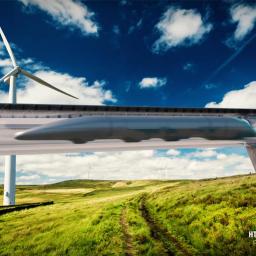
On Thursday, Elon Musk revealed his company "Will be building a Hyperloop test track for companies and student teams to test out their pods. Most likely in Texas." This coincides with his meeting with Texas lawmakers to ease restrictions on sales of his electric luxury cars as he floated the prospect of locating a new car factory or a test facility for his "hyperloop" high-speed mass transit system concept in the state. A Tesla spokesman said Musk's comments about the factory and the hyperloop test track were part of a "wide-ranging discussion in Austin, Texas about Texas matters," and
not an attempt to link those potential investments to a resolution of the dealership matter. Musk's SpaceX space transport company already has a rocket development facility in the state.
Musk's concept of a hyperloop would be an alternative to air travel or high speed trains for travel between cities several hundreds of miles apart. It would work similarly to an air hockey table, but instead of floating on a cushion of air, electromagnetic pulses would propel pressurized cabins inside elevated tubes. Theoretically, the resulting
system could reach speeds approaching 800 mph, faster than the speed of sound, through tubes held up by pylons. The system still needs years of testing, and as much as $10 billion to create even just one 400-mile (San Francisco to Los Angeles) stretch.
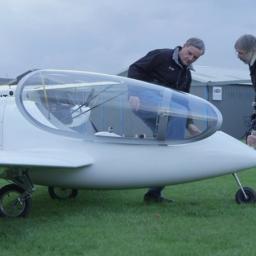
Researchers from the University of Cambridge, in association with Boeing, tested the first aircraft to be powered by a parallel
hybrid-electric propulsion system, where an electric motor and petrol engine work together to drive the propeller. The demonstrator aircraft uses up to 30 per cent less fuel than a comparable plane with a petrol-only engine. The aircraft is also able to recharge its batteries in flight.
Though increasingly common in the automotive industry, the technology has
never before been brought to the aerospace sector. During take-off and climb, when maximum power is required, the engine and motor work together to power the plane, but once cruising height is reached, the electric motor can be switched into generator mode to recharge the batteries or used in motor assist mode to minimise fuel consumption. The same principle at work in a hybrid car.
 LG Display showed off the scintillating possibilities of OLED technology last year with a rollable 22-inch OLED display. Now, the company has unveiled a detachable 55-inch display that you can literally stick to a wall using nothing more than a magnet.
LG Display showed off the scintillating possibilities of OLED technology last year with a rollable 22-inch OLED display. Now, the company has unveiled a detachable 55-inch display that you can literally stick to a wall using nothing more than a magnet.






